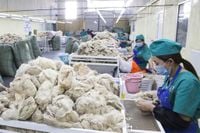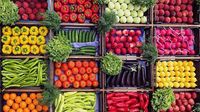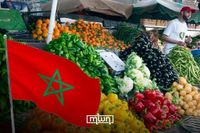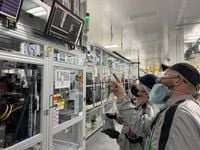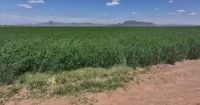Chinese EV battery shipments to the United States dropped sharply in February amid escalating trade tensions, bolstering hopes for Korea’s battery makers expanding their footprint in North America. According to United States International Trade Commission data released on Tuesday, April 15, 2025, imports of Chinese lithium-ion batteries for EVs in January and February totaled $289 million, a 24.4 percent decrease from $383 million a year earlier. While January 2025 saw a 14.8 percent year-on-year rise, February 2025 imports plummeted 58.8 percent.
China remains the top exporter of EV batteries to the United States, but its share of total U.S. battery imports fell dramatically — from 68.8 percent in the January-February period in 2024 to 42.3 percent in the January-February period in 2025. Despite the decline in Chinese battery imports, overall U.S. battery imports rose 23.1 percent during the same period, suggesting that demand is still climbing. The shortfall from China is widely interpreted as a result of tariff pressure rather than softening demand.
The United States imposed a 10 percent general tariff on Chinese imports on February 4, 2025, citing national security concerns over substances like fentanyl. That pushed the effective tariff on Chinese EV batteries from 28.4 percent to 38.4 percent. The Trump administration has since raised tariffs further. In March 2025, it added another 10 percent tariff, and a 25 percent item-specific tariff on auto parts is scheduled to take effect on May 3, 2025. While EV batteries are classified as auto parts, they are excluded from the 125 percent retaliatory tariff list.
Korean battery manufacturers — LG Energy Solution, Samsung SDI, and SK On — stand to benefit from the trade shift. All three have established production bases in the United States. LG Energy Solution operates three sites, including a wholly owned plant in Holland, Michigan. SK On runs its SK Battery America facility in Georgia. Samsung SDI recently launched operations at a joint venture plant in Kokomo, Indiana, with automaker Stellantis. Once their ongoing construction projects are completed, the combined U.S. production capacity of the three companies could reach 600 gigawatt-hours (GWh).
In addition to batteries, Korean shipbuilders are also gaining ground as U.S. scrutiny of China’s shipbuilding sector intensifies. The U.S. Department of Defense recently blacklisted China State Shipbuilding Corporation, and rising tensions have led global shipowners to reconsider contracts with Chinese yards. In March 2025, Korea secured 820,000 compensated gross tons (CGT) in new ship orders — 55 percent of the global total of 1.5 million CGT across 58 vessels — outpacing China, which recorded 520,000 CGT, or 35 percent.
Chinese yards are seeing a marked decline in vessel orders amid growing U.S. pressure. Maritime news outlet TradeWinds, citing Britain-based shipping intelligence firm Howe Robinson, reported Tuesday that bulk carrier orders placed with Chinese shipbuilders totaled just 13 in the first quarter, the lowest since 1993 and down 90.9 percent from 143 a year ago. The order book could grow further for Korea, as U.S. liquefied natural gas (LNG) producer Venture Global is reportedly in talks to place an order for up to 12 LNG carriers with Korea’s top three shipbuilders, in a deal estimated at 4.3 trillion won ($3 billion).
Meanwhile, in the Harquahala Valley of Arizona, alfalfa hay fields stretch as far as the eye can see. Alfalfa hay is mainly used as feed for cattle and is big business in Arizona, with Arizona farms exporting over $100 million of alfalfa overseas a year. Shannon Schulz has been farming in the Harquahala Valley for decades and is unique in the Valley, as he not only harvests his alfalfa but also is part of the export process overseas. His main customers are countries in the Middle East and China.
“Usually, this warehouse is full of hay. It’s not right now because business is just slow,” Schulz said. Business is slow because Chinese dairy farms have all but stopped buying U.S. alfalfa to feed their cattle after the country imposed retaliatory tariffs on U.S. exports. China makes up about half of Arizona's alfalfa export market. “With the current tariffs in place, which is in total about 66% from China to us, it puts our product out of the marketplace,” Schulz explained.
Schulz says that now Chinese farms are buying from other countries in Africa and Europe. For the alfalfa now growing in Arizona’s fields, by the time it's ready to be harvested, there may not be a customer to buy it. Losing about half of his business overnight has not been easy. “It could break us,” Schulz lamented. “It could break a lot of farmers.”
Despite the challenges, Schulz remains hopeful. He voted for President Donald Trump and believes in the goals of his tariff plan to bring manufacturing back to the U.S. and expand exporter access to foreign markets. “In the long run, I think it will be a good thing,” he stated. But for him and many other business owners, the clock is ticking.
Schulz says he has a few months of runway before he will have to decide what to do with his alfalfa farming and export operation. “The question I have is, do we need them more or do they need us more? We don’t know,” Schulz remarked. “We got to have some answers here very quickly.”
During the first Trump Administration, financial aid was given to farmers hurt by tariffs. Department of Agriculture Secretary Brooke Rollins has said the administration is looking into providing assistance again, but no official plans have been announced.
